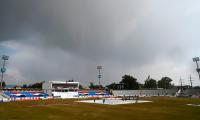In the absence of hard data and information, there have been all kinds of numbers floating around and speculative conjectures about the footprint of the federal government in the ownership and control of economic enterprises.
Such partial or incomplete information has created confusion in the minds of policymakers and the public at large. A distinction has to be made between direct ownership and indirect controls on private businesses through regulations, taxes and tariffs, procurement and input prices etc.
At the time of independence, Pakistan inherited 12 state-owned enterprises (SOEs). In the 1950s and 1960s, some development authorities and corporations such as PIDC, WAPDA etc were established but the real explosion took place in the 1970s after the nationalization of large-scale industries, banks, insurance companies, educational institutions. Privatization of SOEs began earnestly in the 1990s with the manufacturing industries. The process was accelerated in the 2000s with the disposal of major banks and telecommunications companies. Between January 1991 and September 2015, as many as 172 transactions were completed yielding Rs649 billion (approximately $6.5 billion). Since then, the progress has been slow. As a result of the above transactions, Pakistan still had 212 state-owned enterprises to deal with.
This article is an attempt to put together in the public domain the results of a comprehensive exercise called SOE Triage Report in which SOEs have been classified into two broad categories: commercial and non-commercial. Within commercial SOEs, the subsidiaries have been merged with the parent companies to present a consolidated picture and the Triage focuses only on the future course of action for each one of these commercial enterprises. It is pertinent to mention that this report has been endorsed after lengthy discussions by the IMF, World Bank, ADB and has also been approved by the cabinet.
Why was it necessary to undertake such an exercise? First, to get a handle on the sources of total risk exposure to the federal government. The magnitude of the recurring subsidies (explicit and implicit), concessions, unfunded liabilities (difference between the budgeted amounts and the actual outlays), tax and tariff concessions, guarantees written, bank borrowings, pension liabilities of the employees, foreign loans has not been computed before. A dedicated unit of experts in the Ministry of Finance is proposed to regularly monitor and keep track of these liabilities and make it public.
Second, at present there is an admixture of commercial enterprises and non-commercial entities all lumped together under the rubric of SOEs. An analytical classification has sifted out the commercial enterprises from the rest and the focus of the Triage is only on this set. Finally, the rationale for retention, restructuring, privatization, leasing out, divestiture of shares through capital market, liquidation and winding up has been clearly laid down in a transparent and objective manner in respect of each of these enterprises. The usual binary ‘privatize’ or ‘keep under the government’ that has become too emotive has been done away and a more refined and nuanced non-ideological pragmatic approach has been adopted.
The key factors for limiting the exercise to the commercial SOEs are as follows: first, more than 98 percent of the government’s assets and almost 100 percent of the losses in the SOEs portfolio are related to commercial SOEs. Second, the operational performance of commercial SOEs has a direct bearing on fiscal risks and fiscal deficit of the federal government. Third, the non-commercial SOEs are largely self-sustaining entities or are established to achieve a social objective which falls within the social policy objectives of the government which otherwise the private sector is unable to perform.
According to the raw data produced by the Ministry of Finance, currently there are around 212 SOEs operating in various sectors of Pakistan – 85 commercial SOEs; 44 non-commercial SOEs (Section 42, not-for-profit entities as well as trusts, foundations, regulatory bodies, universities, research and training institutions, promotional and advocacy bodies, and welfare funds); and 83 subsidiaries of the commercial SOEs.
After merging the 83 subsidiaries in their respective parent companies we end up with 85 commercial enterprises and 44 non-commercial entities that would no longer form part of this universe of SOES.
These 85 commercial SOEs, to which this exercise is focused, mainly operate in seven sectors: power; oil and gas; infrastructure, transport and communication; manufacturing, mining and engineering; finance; industrial estate development and management; and wholesale, retail and marketing.
Further breaking down the performance of SOEs reveals that over the past six years, one-third of the commercial SOEs have experienced losses intermittently.
As many as 51 of these made profits in FY19 amounting to a total of Rs336 billion but their performance was outstripped by the 33 loss-making entities. Among the latter, the sum of the losses of top-10 loss-making SOEs contribute around 90 percent to the total losses of the SOEs portfolio each year. NHA, Pakistan Railways, PIA, Pakistan Steel, five power-sector DISCOs and ZTBL are these top 10 loss-making incurring net losses of Rs411 billion. Among the other 23 loss-making companies (losses of Rs 69 billion), the significant one was Pakistan Railways with Rs33 billion. The top ten profit-making SOEs are six in the oil and gas sector, three in power, and the National Bank of Pakistan. They together have generated net profits of Rs294 billion; 41 other profit-making entities contributed Rs42 billion.
As mentioned earlier, the primary objective of the triage exercise was to comprehensively review this SOE portfolio to identify SOEs which need to be retained by the government and those which should be privatized or liquidated. Moreover, the next steps, action plan and indicative timelines for various processes were also required to be developed. In terms of incorporation, these 85 fall under two categories: SOEs that are companies established under the Companies Act, 2017 except those incorporated under Section 42; and SOEs established through special enactments that have a substantial revenue stream from their services/user charges that cover their costs.
Although the National Highway Authority (NHA) has been a major loss-making entity for several years, it has been excluded from the triage examination due to its unique nature of operations as the NHA is simultaneously a regulatory body and is also the main implementing agency for highways projects generally financed from the Public Sector Development Program (PSDP). Moreover, the losses of the NHA mainly accrue due to a flawed business model that has since been rectified by ECNEC.
The Ministry of Finance was booking cash development loans against the PSDP projects of the NHA, most of them being commercially unviable. For legitimate and understandable socio-economic considerations, one-fourth of the NHA network is located or under construction in Balochistan. By any stretch of imagination, no agency can service these loans from its own revenues originating from this and similar routes. These projects should be financed out of budgetary grants and not loans.
Similarly, all regulatory bodies have been excluded from triage examination like the PTA, Pemra etc – mainly because regulatory functions are different from commercial operations and are primarily meant for efficient functioning of imperfect markets. The PTA does contribute to non-tax revenues of the budget. We follow the same logic as the State Bank of Pakistan; the SBP as regulator of banks is the highest contributor to non-tax revenues but has never been included in the list of SOEs.
To be continued
The writer is the author of 'Governing the ungovernable'.
Those who wield technology not only change their destiny but alter very definitions of power
Pakistan should, in the long run, aim for geographical diversification for its products to mitigate external shocks
Pakistan must first therefore undertake complete overhaul of its educational landscape
Regardless, climate crisis is a global pandemonium and unfortunately, it is excruciating
Once products are manufactured and ready for distribution, transportation further contributes to environmental harm
Effective foreign exchange regulation can also help prevent currency manipulation and illicit financial activities







